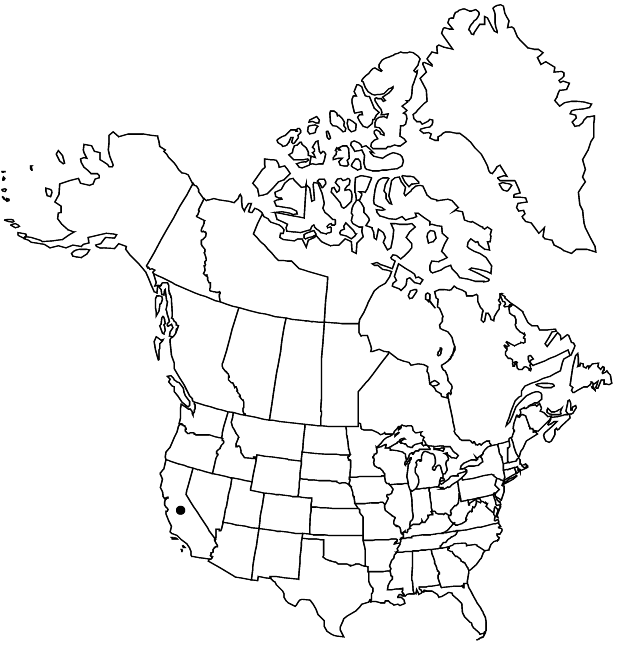Dudleya gnoma
Madroño 44: 49, fig. 1. 1997 ,.
Caudices branching apically, (cespitose), 0.5–2.6 × (0.1–) 1.2–2 cm, axillary branches absent. Leaves: rosettes 1–60, in clumps, 8–20-leaved, 0.8–5.1 cm diam.; blade green, becoming reddish, triangular-ovate, (0.6–) 0.9–2 × 0.5–1.3 cm, 2–4 mm thick, base 0.7–1.5 cm wide, apex acute, surfaces farinose, heavily glaucous. Inflorescences: cyme 2-branched, broadly obpyramidal or flat-topped; branches not twisted (flowers on topside), simple or 1 times bifurcate, (0.3–0.6 cm diam.); cincinni 2–6, 3–7-flowered, circinate, 1–3 cm; floral shoots 2.5–13 × 0.3–0.5 cm; leaves 6–15, spreading, triangular-ovate, 5–10 × 4–6 mm, apex acute. Pedicels erect, not bent in fruit, 1–3 mm. Flowers: calyx 3–4 × 4–5 mm; petals connate 1–1.5 mm, pale to medium yellow, 9–10 × 2–3 mm, apex acute, tips slightly outcurved; pistils connivent, erect. Unripe follicles erect. 2n = 68.
Phenology: Flowering late spring.
Habitat: Thin, gravelly volcanic soil
Elevation: 20-70 m
Discussion
Of conservation concern.
Dudleya gnoma is known from near East Point on Santa Rosa Island and is considered seriously endangered (California Native Plant Society, http://cnps.web.aplus.net/cgi-bin/inv/inventory.cgi). McCabe estimated the total number of plants at 3200. It is like a diminutive form of D. greenei, which grows on the same island. In nature, it is uniformly small and strikingly distinct, and although somewhat larger in cultivation, it remains distinct. It has the same chromosome number as some plants of D. greenei on the same island (C. H. Uhl and R. V. Moran 1953) and doubtless would be interfertile with them. The best taxonomic treatment is uncertain. It is often grown and makes an attractive plant. In gardens it has been known by the illegitimate name D. nana and is called “White Sprite.”
Selected References
None.
